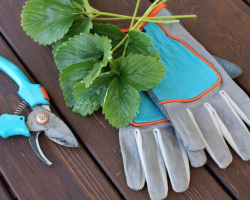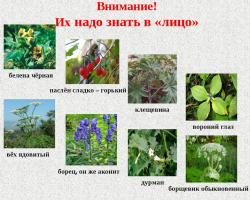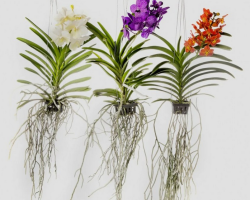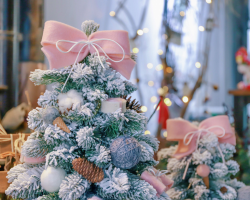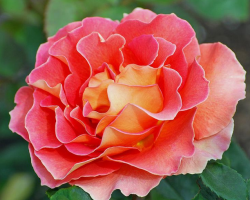How to grow a whim of a flywheel on the windowsill: which insects to feed it, how to water and care
Content
- Where in nature is Homemade Venus flyer?
- Signs about Veninina Mukholovka
- Homemade Venus flywheel structure Life cycles
- How to grow Venerin a flylet from seeds?
- Video: How to grow a flyer from Venerin from seeds?
- Venus Mukholovka - the process of eating insects
- Venus Mukholovka at home: care and watering
- Video: How to take care of the Veninna flycatcher?
Many have heard about predatory plants. Some insectivorous plants can be grown on your windowsill. Venerin Mukholovka at home feels great and even eats flies, spiders and other living creatures. True, care for it is needed careful and special. In this article, for those who decided to buy Venerin Mukholovka, we will try to tell everything about this plant.
Where in nature is Homemade Venus flyer?
Venus Muholovka Plant, which can only be found on the North American continent, in the state of North Carolina. The flycatcher is listed in Red Book, And the greatest danger to her are people who dig a plant for the purpose of sale.
The predatory Venus Mukholovka is concentrated in one single area with a radius of only 150 kilometers in the vicinity of the city Wilmington. In this area, a moderate and humid climate, which is affected by a very close Atlantic Ocean with his warm currents . High mountains also had its special influence on the fact that the predatory plant appeared here Appalachi. Their poor soils provoked the appearance of an insectivorous venin in flycatcher, which receives useful substances from ants, spiders and flies.
Venus flywheel grows on poor soils with a low nitrogen and other beneficial substances. Therefore, it adapted to receive the necessary chemical elements by eating insects.

Signs about Veninina Mukholovka
Venerin Mukholovka is a predator’s predator, and usually he will be made in the house to catch the desired and catch good luck by the tail. At the same time, Venus Mukholovka is a symbol of love and feminine. Therefore, signs related to it are different.
- It is believed that if in the room where the unmarried girl lives, Venus Mukholovka opened traps, then the girlfriend will soon appear. This flower is very tempting and dangerous for spiders and flies, and at the same time the flycatcher is gentle and capricious, like a real girl.
- If you want to lure a man to yourself, then you need to put in the room where you communicate, a pot with a Veninna flycoon. Then the man will certainly be yours. Perhaps this signs have real reasons. Firstly, Dioney exudes a subtle sweet aroma. Secondly, such an interesting plant can start on his windowsill only an extraordinary girl who is provided with the attention of men.
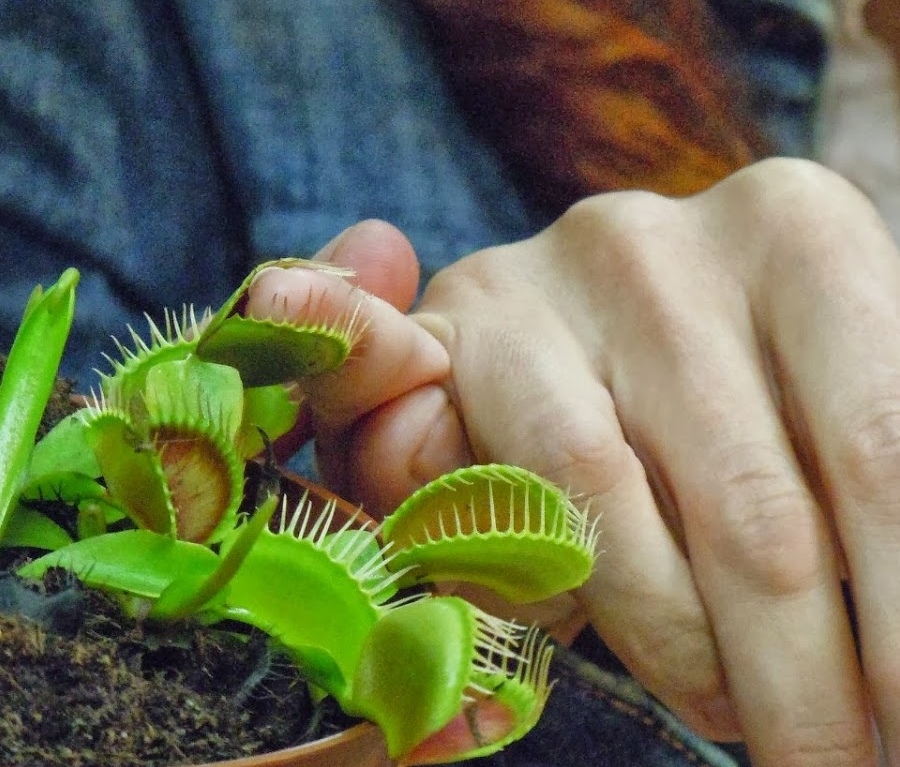
- It is believed that Venus Mukholovka is a plant that brings good luck in business. It helps not to miss the opportunity, to be able to distinguish reliable business partners from unscrupulous people and find themselves at the right time in the right place.
- Venus Mukholovka is considered the guardian of the house. She, as a predator, protects the house from people with unkind thoughts. Such people, next to this plant, will feel uncomfortable, and will try to leave your home faster.
Among the beliefs of the Veninna flycatcher there is not a single signs with a negative meaning. Although this plant is predatory and bloodthirsty in relation to insects, it has positive energy in relation to people.
Homemade Venus flywheel structure Life cycles
Venus flyer at home has from four to seven large sheets, on the ends of which traps grow. Buying Venerin Mukholovka in an adult form is easier in the warmth of the year. In winter, the plant drops all the leaves and goes into "sleep".
In the cold season, Homemade Venus Fleeter sometimes loses all the leaves, and the pot looks absolutely empty. Do not be alarmed, and do not throw away the plant, it is still vividly. Continue to care for the tuber in the ground and, it is likely that it will please you with new shoots.
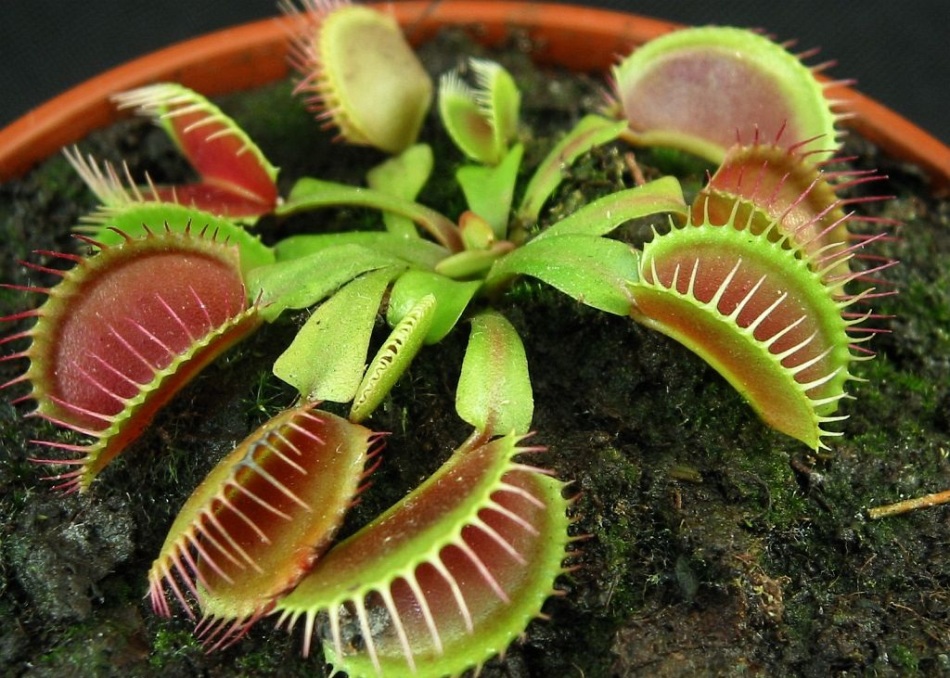
Stem Fustles are immersed in the ground, and the leaves are near the earth. So crawling insects often crawl into a trap of a predatory plant.
The stem of the plant and its the root system closely located. If you dig a flying man from the pot, then find a tuber and a little thin roots. The structure of the plant resembles the structure of onions, beets, Jerusalem artichoke and other root crops. The Veninina flycatcher has a wide base and there are no overgrown roots.

How does a flycatter bloom?
Those who breed indoor plants are interesting how and when Venus is flywhelmed.
Dionia blooms with small white flowers at the end of May early June. And its flowering is as amazing as the plant itself. Blooming Venus flyer throws a long stem on which flowers bloom. Farm dionia eats naive ants and flies, but “spares” the honey plants that pollinate it.
The inflorescence of the flycatcher is the shield, similar to the inflorescence of the phlox, with small white colors. These flowers bloom out of the kidneys sequentially: first, and when the first bloom others. The formation of traps at the ends of the leaves occurs after flowering.

It is believed that if the flycatcher is still very small, then the stem, thrown out for flowering, is better to cut. He draws a lot of effort and juices from flycatches. The cut place must be treated with activated carbon, pulled into powder.
After flowering on the shoots, seeds remain. Seeds of venerenine flycatches are black and very small. They are hidden with many "boxes".

If you look well or use a magnifying glass, you can see that the seeds of the flycase is not round, but have a shape similar to a drop.

How to grow Venerin a flylet from seeds?
Immediately I must say about two things. Firstly, the growing of a Venus flyer from seeds is a long process, usually seedlings appear only in a month. Secondly, with great care, you need to buy seeds on Chinese sites. Unscrupulous sellers sometimes give out the seeds of weeds for the seeds of the Veninna fly agaric.
So, if you decide to buy Venerin flyer in the form of seeds, then besides them you will need:
- Distilled water.
- Fungicide topaz. Fulgicide is a means to combat a fungus for plants. You can buy such a tool in a flower store.
- We also need a piece of bandage, gauze, a cotton pad or any other material that is suitable in order to soak seeds in it.
- You still need a container for planting and always a greenhouse. Around germinating seeds should not walk through a draft. The greenhouse can be done by covering peas with glass or film.
The tactics of seed germination can be different. If you have grown the seeds yourself, then you can plant them literally right away. Soaking before landing for just a few hours.
It is believed that in the seeds of Veninina fly agaric the best germination precisely when they are fresh. And it becomes lower literally after 3-4 days.

But what to do if you do not have Veninina, and you decided to order seeds by mail? In this case, the seeds before planting are recommended to soak for a long time.
- 2 drops of topaz fungicide are added to a glass of distilled water.
- Then, a rag is dipped in this solution and the seeds are wrapped in it.
- A bundle must be put in a bag with small fabric holes.
- This package should be placed in the refrigerator. So the seeds of the Veninna flycatcher should lie in the refrigerator for three weeks, the fabric must be periodically moistened so that it does not dry out.
- The flyer must be planted by Venerin, having spilled out the seeds on the ground. It is not necessary to fall asleep them.
- Then the container with seeds should be covered with glass or film and put in a sunny place. In the spring and summer, the seeds of Venus are flying flycraft in a sunny place on the windowsill. In autumn and winter, it is better to put them under the lamp.
Video: How to grow a flyer from Venerin from seeds?
Venus Mukholovka - the process of eating insects
Inside the traps of Veninna flycatcher there are sensitive hairs. If you touch only one of them, then nothing will happen. But it is worth touching two hairs sequentially - and the trap will instantly slam.
The interval between touches to two hairs can be up to 20 seconds. Thus, Venus Muholovka protects himself from false traps. And it reacts precisely to insects that move paws.
Charles Darwin himself called Venerin Muholovka one of the most beautiful and amazing plants on our planet. The mechanisms of slamming its traps are still not fully studied.
It is believed that Venerin is best to leave the flyciner to be hungry than to overfeed. Some flower growers say that the plant needs only 3-4 insects per month. The reference books even say that 2-3 insects in the whole season are enough Veninina Muholovka.

Venerin flyer, the process of slamming the trap is carried out in just 100 milliseconds. For comparison, the time for which a person blinks, on average, is 400 milliseconds. Thus, while you are blinked, Venus Mukholovka will have time to catch an insect already four times.
Venus Fleep, like other predatory plants, lures insects with a sweet nectar. It is sticky and is located on a bright reddish surface of the leaves. And Venus is flywheel exudes an aroma that is not felt by a person, but tempting for insects.
Venerin flyer, the process of digesting the insect carries out in 2 weeks. After that, the trap is again opened and ready to meet a new victim.

If you are dear to your homemade Venerian flywheel, do not slam her traps for the sake of entertainment. One trap is able to digest seven insects. After that, she wears out. The “idle” slamming also harm the plant and weaken its leaflets.
Charles Darwin was so passionate about the Venusna flycatcher that he devoted an entire book with the name “insectivorous plants” to her and other plants. In this book, the scientist described the taste preferences of the Venus flyer.
- 30 percent of the diet of Veninna flycatches are ants.
- Another 30 percent of plant foods are spiders.
- 10 percent of the “menu” of the plant falls on beetles and grasshoppers.
- Flies and other flying insects make up only 5 percent of the diet of plants in living nature.
Sometimes Veneri Mukholovka also eats slugs and snails. There are evidence that there were even cases when Venus Mukholovka absorbed small frogs. However, Venus Muholovka at home does not need too large food. The insect should be no more than a third of the trap. Otherwise, the leaflet may not cope and begin to rot.

Venus Mukholovka at home: care and watering
Venus flyer - at home, the plant is very picky. And there is a whole list of conditions that must be observed so that the plant develops normally.
Soil for Venusna flycatcher
Venus Mukholovka is very demanding on the ground. She definitely needs acidic peat soil with a level of acidity from 3 to 4.5. It is important that the soil is poor, without fertilizers. Sometimes peat soil for the flycase of a flycatcher is mixed with perlite in the proportion of two to one. Perlit - This is an artificial and absolutely neutral filler. It simply helps to better maintain moisture, holds heat and prevents the formation of a crust in a pot with a plant.
Venus flyer can damage any extraneous impurities in the pot. No need to put moss in a pot or plant other plants to the Veninina flycin. Even the seeds of other plants that accidentally fell into its pot and began to decompose the delicate flycatcher can be destroyed.
The most scrupulous owners even disinfect the soil before planting Venerina fly. The soil is dried in the oven or disinfected in the microwave.

Watering plants
- Venerin Muholovka at home cannot be watered with water from the tap. The plant will simply die from this. Water Venerin flyer with distilled water. Some housewives who are difficult to buy distilled water manage to water the plant, exposing it in the rain.
- Even Venerin should not be watered with a cup or watering can, as we are used to. This fastidious plant can only be drunk from the pallet. That is, you need to pour water into a bowl, and then put a pot in this bowl.
- You can not constantly keep the plant in the pallet of water, but you can not dry the soil. The earth in the pot should remain slightly moist. In winter, fly agaric needs less water than in summer.

Spraying Veninna flycatches
Venerin flyer is a plant that loves moisture. Regularly spray it with a spray gun. Fleeler does not tolerate dry and hot air in the winter. Therefore, it is advisable to take it to winter on the balcony or loggia, where the temperature is not higher than 10 degrees, but also not lower than zero.
Venus Mukholovka and sunlight
Venerin flyer needs direct sunlight. This plant is very photophilous. And he feels good only if it stands on the window that goes south. In an extreme case, Veninin is flying on the windows extending east. In summer, it is advisable to carry pots with flycatches on balconies and loggias, where there is a lot of light.

Plant reproduction and transplantation
Mukholovka is advised to transplant Venerin in the encyclopedia of indoor plants every 1-2 years. This must be done in late spring or early summer.
The plant can multiply with seeds and budding. For budding, you need to gently extract from the ground, growing bulbs, and divided them. But you should not do too often. The fact is that plants feel better when they grow in a group.
Video: How to take care of the Veninna flycatcher?
There are many other interesting articles on our site about growing indoor plants:


